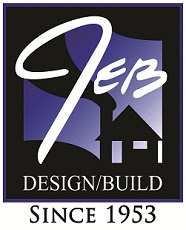
Which Wood Floor? [Text]
When you’re ready to install a beautiful new wood floor in your home, make sure you know exactly what you’re getting. The warm, natural look of solid hardwood is easy to duplicate. In fact, it can be hard to tell the difference between solid wood, engineered wood and wood-look laminate once it’s on the floor. Finally, the newest addition to the wood floor lineup isn’t wood at all, but wood-look porcelain tile.
All are good choices. So consider looking at some samples of each before you choose one for your home.
Engineered wood is a favorite in our area because, unlike solid hardwood, you can lay it directly on a concrete slab. It’s a product made from three to five thin layers of wood, stacked in a cross-grain pattern and laminated together to form one plank. The top layer—the one that you see—is made from a quarter-inch or so of a high-quality wood. Solid hardwood is made from three-quarter-inch strips of solid wood like oak, ash or maple. Side by side it’s hard to tell which one is the real deal.
Because its layers are stacked in opposite directions, engineered planks don’t expand and contract as much on humid days as solid hardwood floors.
The price of an engineered wood floor is about the same as solid hardwood and varies widely depending on the species of the wood and the finish.
Laminate floors—especially the newer versions—look like wood, but they’re not, so many of the colors and styles are less expensive than solid wood. Laminates also come in patterns that look like stone or tile.
Laminated floor planks are made from ground-up wood chips that are mixed with resins to make them moisture resistant. That mixture is pressed into a board, which is overlayed with paper that bears the likeness of the wood, slate or tile that the product intends to mimic. The paper is saturated with melamine for structural stability, and then overlaid with a wear layer that resists scratches, dents and everyday wear and tear.
Manufacturers of laminate floors promote them as stain-, fade- and burn-resistant. Installation is pretty easy because a laminate floor is not nailed to the subfloor; it’s glued or it “floats.”
All three floors are fairly easy to maintain with a dust mop and an occasional spray of whichever water-based wood floor cleaner the manufacturer recommends. Just keep water from pooling on any of them. Wood and water don’t mix well.
Solid hardwood finished with a durable top coat can last for 100 years. You might want to sand and refinish it every decade or so to give it a fresh face.
Engineered wood comes prefinished and wears so well it rarely needs refinishing. Be aware that the thinner its top layer is, the fewer times you’ll be able to sand and refinish it.
Laminate floors never need refinishing. They typically come with warranties of 20-plus years.
Wood-look tile is a newcomer to the wood-floor stage, gaining popularity particularly in bathrooms and kitchens, where water spills might ruin a beautiful wood floor. Imaging technology and manufacturing techniques create the appearance and texture of genuine wood, but with the durability and ease of maintenance of porcelain tile.
So which one is right for you?
Whichever product you wind up with, make sure you’re the one choosing it. Even manufacturers sometimes refer to engineered wood floors as “wood floors”—so it’s possible to buy an engineered floor instead of a solid hardwood floor without knowing it.
Want more information? To get your free book, “11 Remodeling Mistakes Cost You Thousands,” Call Mari at 318-865-4914 or email mari@jeb.net to get an ebook copy.
